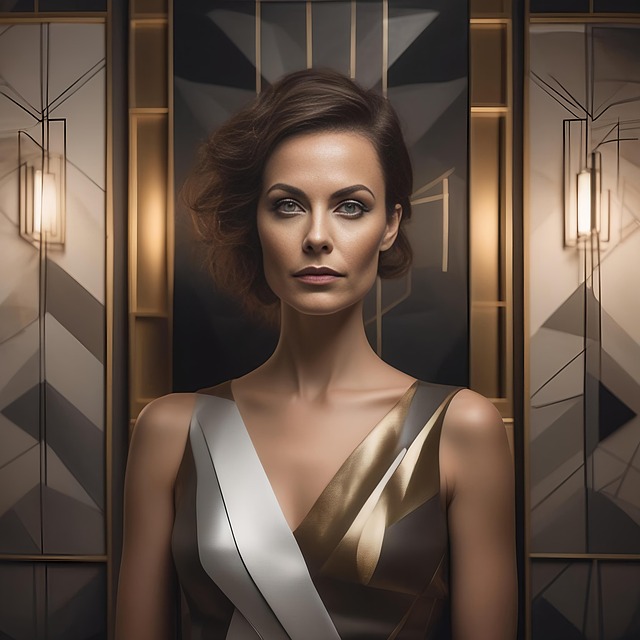# The Fusion of Art and AI: Exploring How Technology is Redefining Visual Experiences
In recent years, the intersection of art and artificial intelligence (AI) has sparked a revolution in the creative landscape. Artists, technologists, and enthusiasts are increasingly exploring the potential of AI to augment artistic expression, reimagine traditional forms, and challenge our understanding of creativity itself. This article delves into the transformative impact of AI on the art world, examining its applications, implications, and the new paradigms it creates for visual experiences.
## The Rise of AI in Artistic Creation
Emerging technologies have long influenced artistic practices, but the advent of AI represents a particularly profound shift. Artists are now leveraging machine learning algorithms to generate original works, creating pieces that are not only visually stunning but also conceptually provocative. For instance, tools like DeepArt and RunwayML allow creators to input images and receive unique reinterpretations based on various artistic styles. This capability opens up new avenues for creativity, enabling artists to experiment with forms and aesthetics that were previously unattainable.
Moreover, AI’s ability to analyze vast datasets has led to the creation of generative art, where algorithms produce works based on learned patterns from existing art. Renowned projects like “Edmond de Belamy,” which was created using a Generative Adversarial Network (GAN), exemplify this trend. The portrait, auctioned at Christie’s for an impressive sum, raises questions about authorship and the essence of creativity. As AI continues to evolve, it invites artists to redefine their roles, shifting from sole creators to collaborators with technology.
## The Impact on Artistic Processes and Collaboration
Beyond creation, AI is reshaping artistic processes and collaboration in significant ways. Artists are increasingly incorporating AI tools into their workflows, enhancing their ability to brainstorm, iterate, and refine their ideas. For example, AI-driven platforms can assist in color selection, composition, and even suggest themes based on current trends or historical data. This integration not only streamlines the creative process but also democratizes access to advanced techniques that were once limited to those with extensive training.
Collaboration between artists and AI researchers is also burgeoning, leading to innovative projects that blend human intuition with machine precision. One notable example is the collaboration between visual artist Refik Anadol and AI, where data from urban environments is transformed into immersive installations. Such projects illustrate how AI can amplify human creativity, allowing for the exploration of complex concepts and narratives that resonate with audiences on multiple levels.
Additionally, the use of AI in art opens up new possibilities for interactive experiences. Artists can create works that respond to viewer engagement, allowing audiences to influence the outcome of the artwork in real time. This interactivity fosters a deeper connection between the artwork and its audience, transforming passive observation into active participation. As a result, the boundaries between creator and viewer blur, creating a more inclusive and dynamic art experience.
## Ethical Considerations and the Future of Art
While the fusion of art and AI presents exciting opportunities, it also raises critical ethical questions that must be addressed. The notion of authorship becomes increasingly complex when AI is involved in the creative process. Who owns the rights to an artwork generated by an algorithm? Is it the programmer, the artist, or the AI itself? These questions challenge traditional understandings of creativity and intellectual property, prompting a reevaluation of how we define artistic ownership in the digital age.
Furthermore, the potential for AI to perpetuate biases found in training data cannot be overlooked. If artists rely solely on AI-generated outputs without critical engagement, there is a risk of reproducing existing stereotypes and cultural narratives. Therefore, it is essential for artists to maintain a critical lens when integrating AI into their work, ensuring that the technology serves as a tool for empowerment rather than a means of replication.
Looking ahead, the future of art in the age of AI is ripe with possibilities. As technology continues to advance, we can expect to see even more sophisticated AI applications that challenge our perceptions of creativity. Virtual reality (VR) and augmented reality (AR) are likely to play significant roles in this evolution, providing immersive environments where AI-generated art can thrive. The potential for AI to analyze and adapt to viewer reactions in real-time will further enhance the interactivity of art, creating personalized experiences that resonate on a deeper level.
In conclusion, the fusion of art and AI is redefining visual experiences in profound ways. As artists embrace these technologies, they are not only expanding their creative horizons but also prompting critical discussions about the nature of art itself. By navigating the ethical complexities and leveraging the collaborative potential of AI, the art world stands at the precipice of a new era—one where technology and creativity coalesce to forge innovative expressions that reflect the complexities of our contemporary existence. As we continue to explore this exciting frontier, the dialogue between art and AI will undoubtedly shape the future of visual experiences for generations to come.

